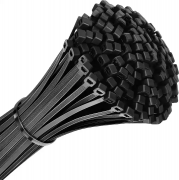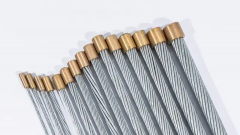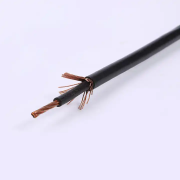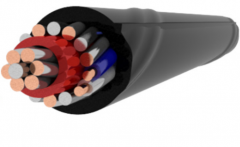Dosense cable > News >
News
News
- How to Install AAC Conductor
- Power cable current carrying capacity
- Guide on Low Voltage Aerial Bundling Cables(ABC Cab
- Guide to Electrical Insulators
- The difference between 3 + 2 and 4 + 1 on wires and
- What are the cable accessories?
- AWG (American Wire Gauge) to MM2 Conversion
- Cable Short Circuit Current Calculate
- Overhead conductor,poles,and gold fittings design
- OPGW Cable Line Design Several Key Issues[2]
Contact us
E-Mail:info@dosensecable.com
Phone:+8613073786551
Tel:+8613073786551
Add:Zhengzhou, Henan,China
News
Guide on Low Voltage Aerial Bundling Cables(ABC Cable)
Author:admin Release time:2023-08-12 14:46Click:
Guide on Low Voltage Aerial Bundling Cables
I. Introduction
A. Low Voltage Aerial Bundling Cables are cables designed for areas with low voltage power distribution, such as residential areas.
B. The cables are designed to be installed in the air, and they provide a reliable and efficient means of power distribution.
II. Features of Low Voltage Aerial Bundling Cables
A. The cables are made up of aluminum conductors and cross-linked polyethylene insulation, which makes them sturdy and durable.
B. They are resistant to weather elements and can endure exposure to harsh conditions, such as humidity, temperature changes, UV radiation, and moisture.
C. The conductors are supported by a central core and are encased in a protective sheath.
III. Installation Process
A. The installation process requires specific tools and equipment, including a tensioner and a pulling rope. Safety equipment such as gloves, helmets, and harnesses are also necessary.
B. Installing the cables requires the following steps:
1. Preparing the support structures to bear the weight of the cables.
2. Unreeling the cables and easing them into position, securing them to the support structures at specific intervals.
3. Properly connecting the conductors using recommended connectors.
C. During installation, it is important to adhere to safety precautions, such as avoiding working close to energized cables.
IV. Benefits of Low Voltage Aerial Bundling Cables
A. The cables are efficient and reliable, which enhances the performance of the power distribution system.
B. They are cost-effective compared to other cable options, such as laying cables underground, which requires more capital.
C. They are highly resistant to environmental elements, which reduces the need for frequent repairs and replacements.
V. Maintenance and Troubleshooting
A. Regular inspection and cleaning are important in identifying issues with the cables before they escalate.
B. Common issues such as rodents damaging the cables require prompt attention to avoid compromising cable performance.
C. Repair and replacement guidelines should be adhered to in case any issues arise.
VI. Conclusion
A. Low Voltage Aerial Bundling Cables are a vital component of low voltage power distribution systems, providing an efficient and reliable mode of transmission.
B. Proper installation and maintenance are critical in ensuring optimal cable performance and longevity.Guide on Low Voltage Aerial Bundling Cables
I. Introduction
A. Low Voltage Aerial Bundling Cables are cables designed for areas with low voltage power distribution, such as residential areas.
B. The cables are designed to be installed in the air, and they provide a reliable and efficient means of power distribution.
II. Features of Low Voltage Aerial Bundling Cables
A. The cables are made up of aluminum conductors and cross-linked polyethylene insulation, which makes them sturdy and durable.
B. They are resistant to weather elements and can endure exposure to harsh conditions, such as humidity, temperature changes, UV radiation, and moisture.
C. The conductors are supported by a central core and are encased in a protective sheath.
III. Installation Process
A. The installation process requires specific tools and equipment, including a tensioner and a pulling rope. Safety equipment such as gloves, helmets, and harnesses are also necessary.
B. Installing the cables requires the following steps:
1. Preparing the support structures to bear the weight of the cables.
2. Unreeling the cables and easing them into position, securing them to the support structures at specific intervals.
3. Properly connecting the conductors using recommended connectors.
C. During installation, it is important to adhere to safety precautions, such as avoiding working close to energized cables.
IV. Benefits of Low Voltage Aerial Bundling Cables
A. The cables are efficient and reliable, which enhances the performance of the power distribution system.
B. They are cost-effective compared to other cable options, such as laying cables underground, which requires more capital.
C. They are highly resistant to environmental elements, which reduces the need for frequent repairs and replacements.
V. Maintenance and Troubleshooting
A. Regular inspection and cleaning are important in identifying issues with the cables before they escalate.
B. Common issues such as rodents damaging the cables require prompt attention to avoid compromising cable performance.
C. Repair and replacement guidelines should be adhered to in case any issues arise.
VI. Conclusion
A. Low Voltage Aerial Bundling Cables are a vital component of low voltage power distribution systems, providing an efficient and reliable mode of transmission.
B. Proper installation and maintenance are critical in ensuring optimal cable performance and longevity.Guide on Low Voltage Aerial Bundling Cables
I. Introduction
A. Low Voltage Aerial Bundling Cables are cables designed for areas with low voltage power distribution, such as residential areas.
B. The cables are designed to be installed in the air, and they provide a reliable and efficient means of power distribution.
II. Features of Low Voltage Aerial Bundling Cables
A. The cables are made up of aluminum conductors and cross-linked polyethylene insulation, which makes them sturdy and durable.
B. They are resistant to weather elements and can endure exposure to harsh conditions, such as humidity, temperature changes, UV radiation, and moisture.
C. The conductors are supported by a central core and are encased in a protective sheath.
III. Installation Process
A. The installation process requires specific tools and equipment, including a tensioner and a pulling rope. Safety equipment such as gloves, helmets, and harnesses are also necessary.
B. Installing the cables requires the following steps:
1. Preparing the support structures to bear the weight of the cables.
2. Unreeling the cables and easing them into position, securing them to the support structures at specific intervals.
3. Properly connecting the conductors using recommended connectors.
C. During installation, it is important to adhere to safety precautions, such as avoiding working close to energized cables.
IV. Benefits of Low Voltage Aerial Bundling Cables
A. The cables are efficient and reliable, which enhances the performance of the power distribution system.
B. They are cost-effective compared to other cable options, such as laying cables underground, which requires more capital.
C. They are highly resistant to environmental elements, which reduces the need for frequent repairs and replacements.
V. Maintenance and Troubleshooting
A. Regular inspection and cleaning are important in identifying issues with the cables before they escalate.
B. Common issues such as rodents damaging the cables require prompt attention to avoid compromising cable performance.
C. Repair and replacement guidelines should be adhered to in case any issues arise.
VI. Conclusion
A. Low Voltage Aerial Bundling Cables are a vital component of low voltage power distribution systems, providing an efficient and reliable mode of transmission.
B. Proper installation and maintenance are critical in ensuring optimal cable performance and longevity.
News
-
2023-10-02How to Install AAC Conductor
-
2023-08-30Power cable current carrying capacity
-
2023-08-12Guide to Electrical Insulators
-
2022-03-17What are the cable accessories?
Related Products





 info@dosensecable.com
info@dosensecable.com








 Tel:
Tel:  Address: Zhengzhou, Henan,China
Address: Zhengzhou, Henan,China